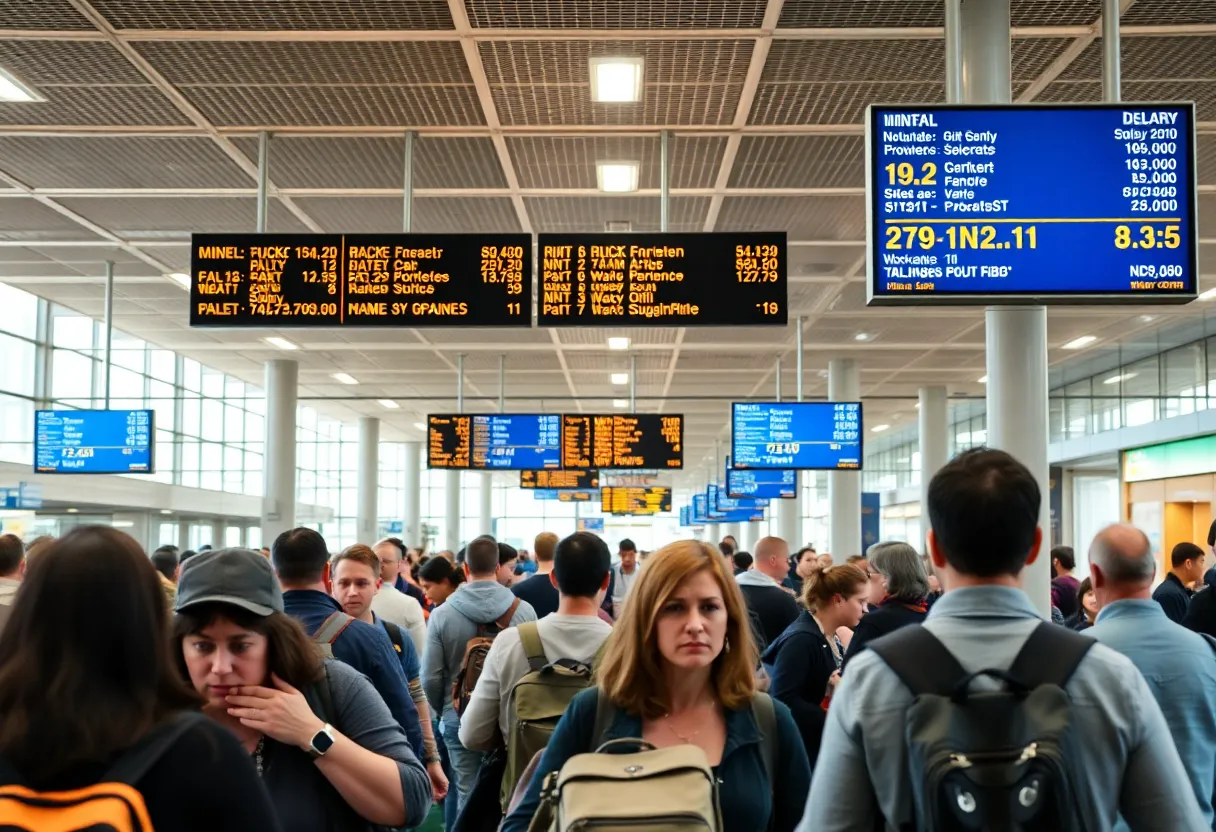News Summary
Newark Liberty International Airport is experiencing severe delays and flight cancellations due to air traffic controller shortages and equipment failures. On Monday, arriving flights faced average delays of four hours, while departures were delayed by up to half an hour. The ongoing issues at the Philadelphia Terminal Radar Approach Control center added to the complexity of the situation. Over 150 flights were canceled and more than 250 delayed, causing significant disruptions for travelers. The Federal Aviation Administration is addressing the staffing shortfall with recruitment incentives, but experts warn that solutions will take time.
Newark, New Jersey – Newark Liberty International Airport is currently experiencing significant delays and cancellations due to a combination of air traffic controller shortages and equipment failures exacerbated by thick fog. On Monday, arriving flights at Newark faced an average delay of four hours, while departures were delayed by up to half an hour as the airport struggled to manage the backlog created by congestion on two of its runways.
As of noon on Monday, over 150 flights have been canceled and more than 250 additional flights were delayed. The situation is further complicated by ongoing issues at the Philadelphia Terminal Radar Approach Control center, which oversees Newark’s airspace and has been particularly impacted by staffing shortages that contribute to the lengthy delays.
One contributing factor to the operational challenges at Newark is the renovation of a third runway, which is not expected to conclude until mid-June. This situation forces the facility to operate efficiently with limited capacity. High winds and adverse weather conditions also resulted in the airport relying on a single runway, further complicating the scheduling of the approximately 1,000 flights that depart and arrive daily from Newark.
The Federal Aviation Administration (FAA) has identified a national shortfall of over 3,000 air traffic controllers, a critical issue affecting airports across the country. The challenges at Newark reflect a broader systemic problem within the air traffic control system, which is experiencing chronic understaffing and issues with technology. Recent reports reveal that radar and communications equipment failures have impeded operations, and controllers have encountered incidents where they lost contact with aircraft due to these technological malfunctions. Controller morale has been negatively affected, leading to increased instances of leave for trauma following these incidents.
United Airlines, the dominant carrier at Newark, has responded to the ongoing disruptions by reducing its schedule, cutting 35 round-trip flights each day. The airline operates a total of 328 daily flights at Newark, connecting travelers to numerous U.S. cities and international destinations. As part of efforts to improve staffing, the FAA launched a recruitment package last week that includes incentives such as bonuses and increased pay for new controllers. However, industry experts warn that it will take significant time to address the shortfall and fully onboard thousands of new hires.
Over the past week, Newark has recorded over 2,800 flight delays, reflecting the significant impact these disruptions have had on the travel plans of thousands of passengers. In response to the heightened delays, a ground delay program was implemented, which has held flights bound for Newark for an average of 2 hours and 41 minutes.
The Port Authority of New York and New Jersey, which operates Newark Airport, is also addressing infrastructure issues with a $121 million project aimed at repaving the airport’s busiest runway. However, this renovation is likely to create additional scheduling difficulties in the near future. The FAA has acknowledged that the current staffing shortages and technological issues will take years to remedy fully.
Mental health concerns among air traffic controllers have become an increasing focus, with the National Air Traffic Controllers Association emphasizing the trauma many controllers face that affects their ability to work safely. The system’s chronic understaffing and the pressures associated with the current operational reality highlight the urgent need for long-term solutions to stabilize air traffic management and improve the overall travel experience for passengers at Newark and beyond.
Deeper Dive: News & Info About This Topic
HERE Resources
Communication Breakdown Wreaks Havoc at Newark Liberty International Airport
Additional Resources
- Washington Post: Newark Airport Flight Delays
- Wikipedia: Newark Liberty International Airport
- NJ.com: Newark Airport Delays Update
- Google Search: Newark Airport delays
- CNN: Inside the Newark Airport Meltdown
- Encyclopedia Britannica: Air Traffic Control
- New York Times: Newark Airport Disruptions
- Google News: Newark Airport
- USA Today: Newark Airport Delays and Cancellations
- Google Scholar: Newark Airport flight delays








